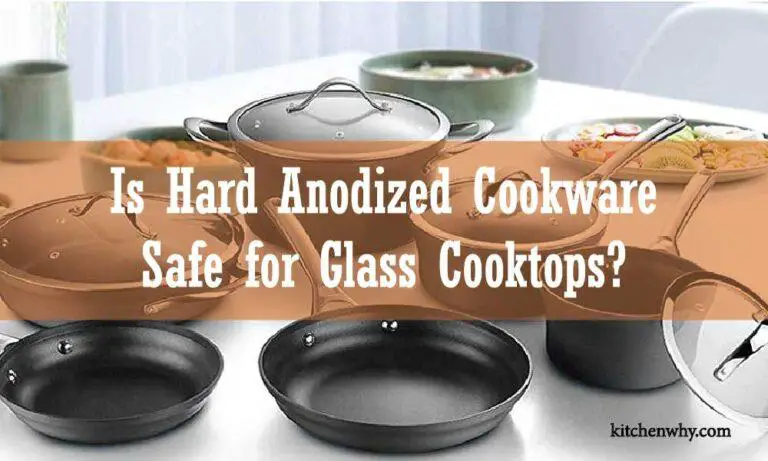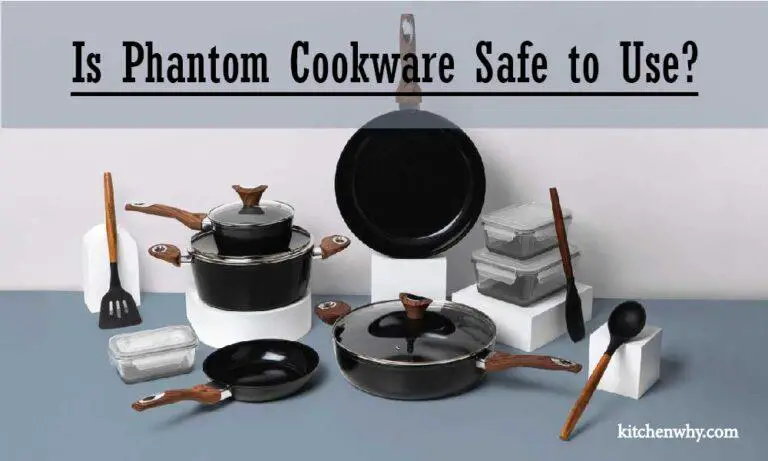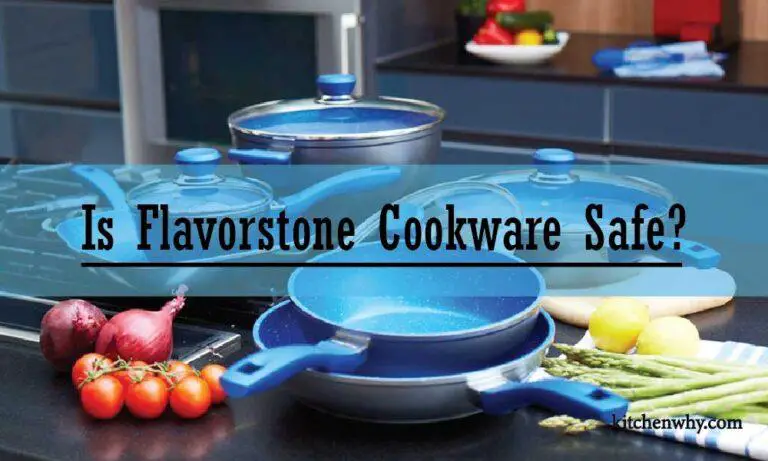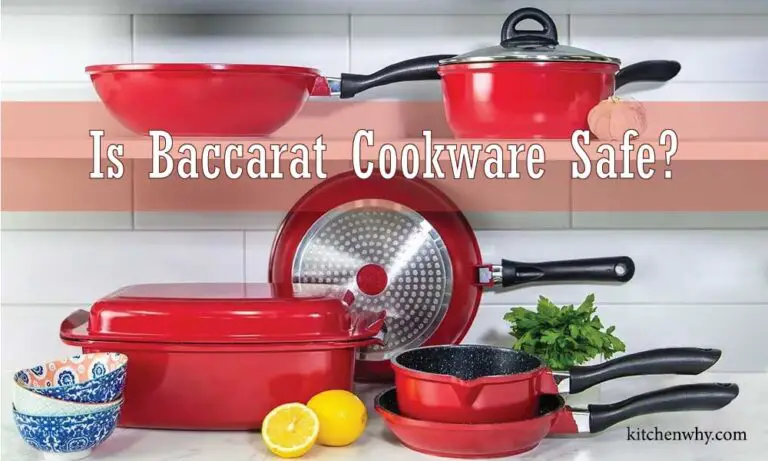How to Revitalize Discolored Enamel Cookware: Easy Cleaning Hacks
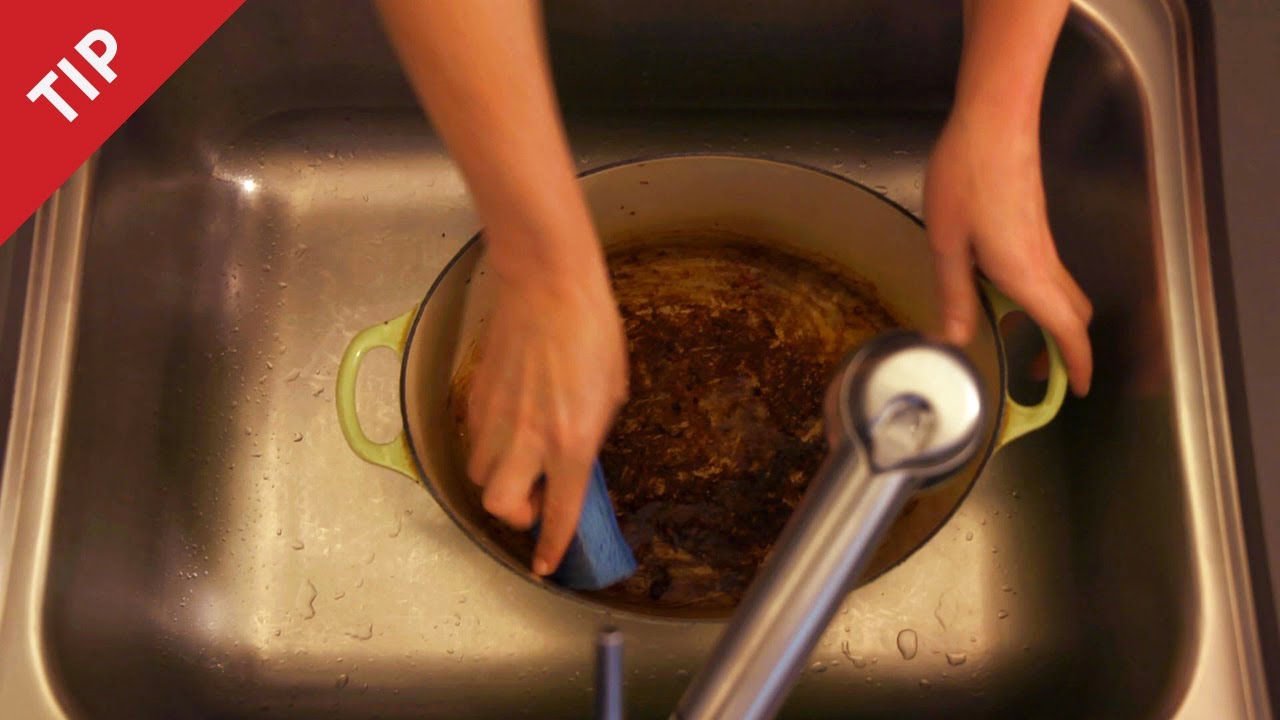
To clean discolored enamel cookware, scrub it with a mixture of baking soda and water. This gentle abrasive will remove stains and restore the cookware’s original brightness.
Enamel cookware can become discolored over time due to food residue and high heat exposure. However, by following these simple steps, you can bring back the shine to your cookware and extend its lifespan.
:max_bytes(150000):strip_icc()/home-organizingcleaninghow-to-clean-an-oven-05-real-simple-7f8bbaf53c814e9495daa8f5d76e9ad8.jpg)
Credit: www.realsimple.com
Understanding Discoloration In Enamel Cookware
Discolored enamel cookware can be a real eyesore in the kitchen. Whether it’s a stain from a tomato-based sauce or a darkening caused by years of use, knowing how to clean and restore the enamel surface can make a big difference in the appearance and performance of your cookware.
In this blog post, we will delve deeper into the causes of discoloration in enamel cookware, specifically focusing on heat exposure, chemical reactions, and stains from food.
Causes Of Discoloration In Enamel Cookware:
- Heat exposure: Excessive heat can cause enamel cookware to discolor, resulting in dark spots or a yellowish tint. When subjected to high temperatures, the enamel coating may react and change color. Prolonged exposure to direct heat sources, such as a gas flame or electric stove burner, can accelerate the discoloration process.
- Chemical reactions: Enamel cookware can undergo chemical reactions when exposed to certain ingredients or cleaning agents. Acidic foods and harsh chemicals can react with the enamel surface, leading to discoloration. For example, cooking dishes with high acidity, like citrus-based sauces or vinegar-based marinades, can cause the enamel to deteriorate and become discolored over time.
- Stains from food: Food stains can accumulate on the surface of enamel cookware, resulting in discoloration. Ingredients like turmeric, tomato sauce, or beet juice are notorious for leaving stubborn stains on enamel surfaces. If not promptly cleaned, these stains can become permanent and detract from the appearance of your cookware.
Understanding the causes of discoloration in enamel cookware is the first step towards effective cleaning and maintenance. By addressing heat exposure, being mindful of chemical reactions, and tackling food stains promptly, you can restore your enamel cookware to its former glory.
In the following sections, we will explore various methods and techniques for cleaning discolored enamel cookware, so stay tuned for more tips and tricks.
Assessing The Severity Of Discoloration
Identifying Mild, Moderate, And Severe Discoloration
As avid cooks, we all know how disheartening it can be to see our once shiny enamel cookware lose its luster over time. But fear not, because in this blog post, we will walk you through the steps to effectively clean discolored enamel cookware.
Before diving into the cleaning process, it’s important to assess the severity of the discoloration. This will help you determine the right cleaning method to bring your cookware back to life.
Checking For Surface Stains
Start by examining the exterior of the cookware for any surface stains. These can include food remnants, burnt-on residues, or even stubborn grease spots. Here are the key points to consider when assessing surface stains:
- Look for visible stains or discoloration on the outside of the cookware.
- Pay attention to any areas that appear to be greasy or sticky.
- If the discoloration is confined to the surface, it can usually be easily cleaned using simple household cleaning methods.
Examining The Interior For Discoloration
Once you’ve checked the exterior, it’s time to turn your attention to the interior of the cookware. This is where the real magic happens, as it’s often the interior that experiences the most discoloration due to the cooking process. Here are the key points to consider when examining the interior for discoloration:
- Check for any signs of discoloration or staining on the inside of the cookware.
- Look for areas that have become darkened or have a brownish tint.
- Pay attention to spots where food tends to stick or burn easily.
- The severity of discoloration on the interior will determine the cleaning method you should use.
By thoroughly assessing the severity of discoloration on both the surface and interior of your enamel cookware, you’ll have a better understanding of how to proceed with the cleaning process. So let’s roll up our sleeves and get ready to restore that beautiful shine to your favorite cookware!
Cleaning Enamel Cookware With Household Ingredients
Stains and discoloration on enamel cookware can make your once shiny pots and pans appear less appealing. But fear not! There are several household ingredients that can effectively clean and restore the beauty of your enamel cookware. In this guide, we’ll explore the power of baking soda, vinegar, and lemon juice in rejuvenating your discolored enamel cookware.
From gentle surface cleaning to tackling stubborn interior stains, these natural ingredients can do wonders for your pots and pans. So let’s dive in and discover how to clean enamel cookware using simple household ingredients.
Utilizing Baking Soda For Gentle Cleaning
- Baking soda is a gentle yet effective cleaner for enamel cookware.
- It helps remove light stains and discoloration without scratching the surface.
- Baking soda is safe to use and has natural deodorizing properties.
Baking Soda And Water Paste For Surface Stains
- Create a thick paste by mixing baking soda and water.
- Apply the paste to the surface stains of your enamel cookware.
- Gently rub in circular motions using a soft cloth or sponge.
- Rinse thoroughly with warm water and dry with a clean towel.
Soaking In Baking Soda Solution For Interior Discoloration
- For interior discoloration, make a baking soda solution by dissolving it in warm water.
- Submerge the discolored cookware in the solution, ensuring it is fully covered.
- Allow it to soak for a few hours or overnight to loosen the stains.
- Rinse the cookware well with warm water and dry it completely.
Removing Stains With Vinegar
- Vinegar is an acidic cleaning agent that can effectively remove stains on enamel cookware.
- It helps dissolve mineral deposits and stubborn stains.
- It is important to dilute vinegar before use to prevent damage to the enamel surface.
Vinegar And Water Solution For Surface Stains
- Mix equal parts of vinegar and water to create a solution.
- Apply the solution to the surface stains using a soft cloth or sponge.
- Let it sit for a few minutes to allow the vinegar to work its magic.
- Rinse thoroughly with warm water and dry the cookware.
Boiling Vinegar For Stubborn Discoloration
- For stubborn discoloration, fill the discolored cookware with a mixture of water and vinegar.
- Bring the solution to a boil and let it simmer for a few minutes.
- Remove the cookware from heat and let it cool before rinsing thoroughly.
- Stubborn stains should be significantly reduced or completely removed.
Using Lemon Juice For Natural Bleaching
- Lemon juice is a natural bleaching agent that can help lighten discolored enamel cookware.
- It is effective in removing stains caused by tea, coffee, and other dark substances.
- The high acidity in lemon juice works as a mild bleach for enamel.
Applying Lemon Juice Directly To Stains
- Squeeze fresh lemon juice onto the stained areas of the cookware.
- Let it sit for a few minutes to allow the lemon juice to penetrate the stains.
- Gently scrub the stained areas using a soft cloth or sponge.
- Rinse thoroughly with warm water and dry the cookware.
Soaking In Lemon Juice Solution For A Deeper Clean
- Create a lemon juice solution by mixing lemon juice and water.
- Submerge the discolored cookware in the solution and ensure it is fully covered.
- Let it soak for several hours or overnight to allow the lemon juice to work its magic.
- Rinse the cookware well with warm water and dry it completely.
By utilizing these household ingredients, you can effectively clean and restore the beauty of your enamel cookware. Say goodbye to stains and discoloration, and hello to shiny and vibrant pots and pans. With a little bit of effort and the power of natural cleaning agents, your enamel cookware will look brand new again.
So start cleaning and enjoy the benefits of a sparkling kitchen!
Deep Cleaning Enamel Cookware With Specialized Cleaners
When it comes to deep cleaning discolored enamel cookware, sometimes regular dish soap and scrubbing just won’t cut it. That’s where specialized cleaners come in. These products are designed specifically to remove tough stains and restore the shine to your enamel cookware.
Here are some key points to keep in mind when using commercial enamel cleaners:
Introducing Commercial Enamel Cleaner Options
- Commercial enamel cleaners are specifically formulated to tackle tough stains and discoloration on enamel cookware.
- They often come in the form of powders or pastes, which can be easily applied to the surface of the cookware.
- These cleaners contain active ingredients that break down and dissolve stubborn stains, making them easier to remove.
Reading Product Labels For Compatibility
- Before using any commercial enamel cleaner, it’s important to read the product label carefully.
- Check if the cleaner is specifically formulated for enamel cookware and if it is safe to use on the type of enamel you have.
- Pay attention to any warnings or precautions mentioned on the label to ensure you are using the cleaner correctly and safely.
Choosing Eco-Friendly And Non-Toxic Options
- If you prefer to use eco-friendly and non-toxic cleaners, look for enamel cleaners that are labeled as such.
- These cleaners are often made with natural ingredients and do not contain harsh chemicals that can be harmful to you or the environment.
- Eco-friendly enamel cleaners are just as effective at removing stains and discoloration without compromising your health or the planet.
Exploring Alternative Techniques For Deep Cleaning
- If you’re looking for alternative methods to clean your enamel cookware, there are a few techniques you can try.
- Cream of tartar and hydrogen peroxide can be combined to create a powerful cleaning paste.
- Simply mix equal parts cream of tartar and hydrogen peroxide to form a paste. Apply the paste to the stained areas and let it sit for about 30 minutes before scrubbing it off.
Using Cream Of Tartar And Hydrogen Peroxide
- Cream of tartar acts as a gentle abrasive that helps lift stains, while hydrogen peroxide has powerful stain-removing properties.
- When combined, these two ingredients form a potent cleaning solution that can effectively restore the shine to your enamel cookware.
Trying A Baking Soda And Hydrogen Peroxide Paste
- Another alternative technique is to create a paste using baking soda and hydrogen peroxide.
- Mix equal parts baking soda and hydrogen peroxide to form a thick paste. Apply the paste to the discolored areas of your cookware and let it sit for a few hours.
- Afterwards, scrub the paste off using a non-abrasive sponge or cloth. This method can help remove stubborn stains and brighten your enamel cookware.
By utilizing these specialized cleaners and alternative techniques, you can effectively deep clean your discolored enamel cookware and restore its original shine. Experiment with different methods to find the one that works best for you. With a little bit of effort, your enamel cookware will look brand new again.
Maintaining And Preventing Discoloration
Enamel cookware is not only beautiful but also highly durable. However, over time, it can develop discoloration, which can be quite stubborn to remove. The good news is that with proper care and preventative measures, you can keep your enamel cookware looking new and vibrant for years to come.
Let’s explore some essential tips on how to maintain and prevent discoloration in your enamel cookware.
Proper Care And Storage Of Enamel Cookware:
- Wash enamel cookware by hand using a mild dish soap and a non-abrasive sponge or cloth.
- Avoid soaking the cookware for extended periods, as this can lead to the enamel coating deteriorating over time.
- Rinse thoroughly with warm water after each use to remove any food residue.
- Dry the cookware immediately using a soft towel to prevent water spots and mineral buildup.
Avoiding Abrasive Cleaners And Utensils:
- Steer clear of using abrasive cleaners, scouring pads, or steel wool, as these can scratch and damage the enamel surface.
- Opt for non-abrasive cleaning products specifically designed for enamel cookware.
- Be mindful of the utensils you use with your cookware. Avoid metal utensils that can cause scratches and opt for silicone, wooden, or plastic utensils instead.
Storing Cookware In A Dry Place:
- Moisture is one of the culprits behind enamel discoloration. Make sure your cookware is completely dry before storing it.
- Store your cookware in a cool, dry place away from direct sunlight and excess humidity.
- Place a paper towel or a cloth between stacked enamel pots and pans to prevent scratching and chipping.
Seasoning Enamel Cookware For Enhanced Durability:
- Seasoning helps create a protective layer on the cookware’s surface, preventing discoloration and enhancing its durability.
- Before the first use, apply a thin layer of vegetable oil to the entire surface of the cookware.
- Heat the cookware on low heat for about 10 minutes to allow the oil to penetrate the enamel.
- Let the cookware cool, and then wipe off any excess oil with a paper towel.
Applying A Thin Layer Of Oil After Cleaning:
- After each use and cleaning, it’s advisable to apply a thin layer of oil to the enamel surface.
- This helps maintain the enamel’s luster and prevents any potential discoloration from occurring.
- Use a soft cloth or paper towel to apply the oil, ensuring an even coating.
Curing In The Oven For A Protective Coating:
- Periodically, you can give your enamel cookware a protective coating by curing it in the oven.
- Preheat the oven to the recommended temperature stated by the cookware manufacturer.
- Place the cookware upside down on the oven rack and let it bake for the specified time.
- This process creates a protective coating that helps prevent discoloration and enhances the cookware’s longevity.
By following these simple yet effective tips, you can maintain the beauty and performance of your enamel cookware. Remember, a little care and attention go a long way in preserving the vibrant colors and durability of your cherished cookware.
Frequently Asked Questions On How To Clean Discolored Enamel Cookware
How Do You Clean Discolored Enamel Cookware?
To clean discolored enamel cookware, create a paste of baking soda and water, scrub gently, and rinse thoroughly.
Can You Use Bleach To Clean Enamel Cookware?
Bleach is not recommended for cleaning enamel cookware, as it can damage the enamel surface.
What Home Remedies Can I Use To Clean Enamel Cookware?
You can clean enamel cookware using a mixture of vinegar and water or a paste of baking soda and water.
How Often Should I Clean My Enamel Cookware?
It is recommended to clean your enamel cookware after each use to prevent discoloration and maintain its appearance and performance.
Are There Any Special Precautions I Should Take When Cleaning Enamel Cookware?
Avoid using abrasive cleaners, scouring pads, or metal utensils that can scratch the enamel surface of your cookware.
Conclusion
To sum it up, keeping your enamel cookware looking clean and vibrant is essential for maintaining its longevity and functionality. With the right techniques and ingredients, you can easily get rid of discoloration and restore the beauty of your cookware.
Regularly scrubbing with baking soda and vinegar is a powerful way to remove stains and restore the shine. For more stubborn stains, using a paste of baking soda and hydrogen peroxide can work wonders. Remember to always handle your enamel cookware with care, using non-abrasive cleaners and soft brushes to avoid scratching the surface.
With these simple tips, you can enjoy using your enamel cookware for years to come, knowing that it’s not only a pleasure to cook with but also a beautiful addition to your kitchen.

